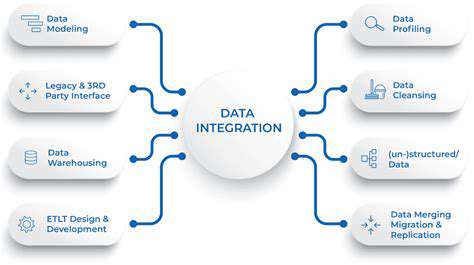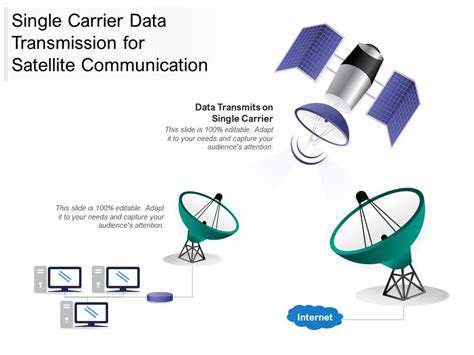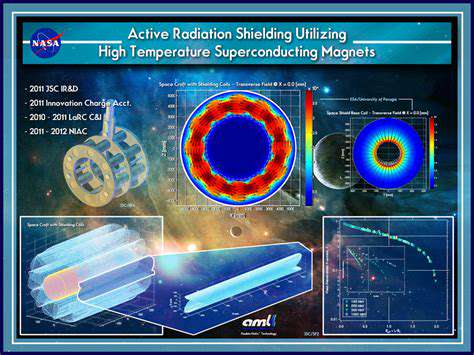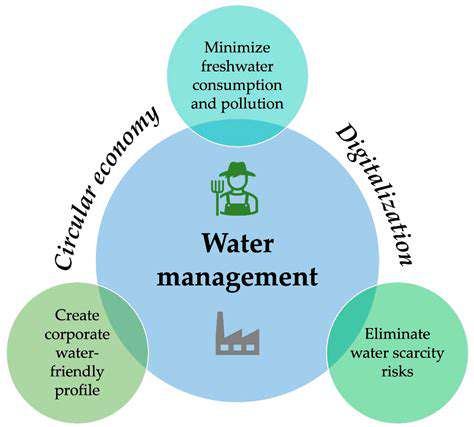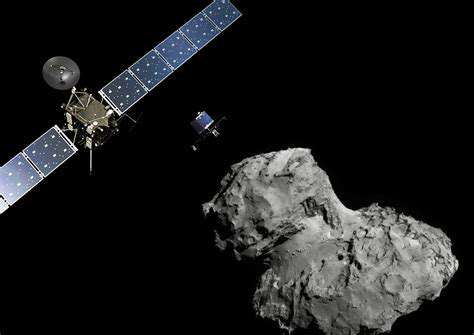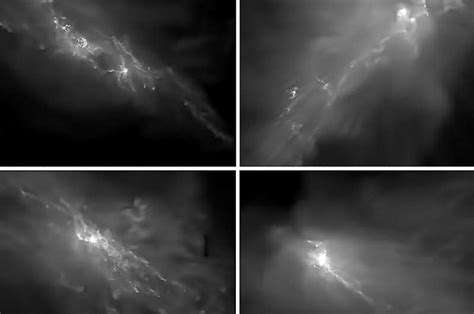The concept of swarm satellites, a constellation of small, interconnected satellites working together, is rapidly evolving into a powerful tool for space exploration and Earth observation. These miniature spacecraft, often designed with modularity and affordability in mind, offer unprecedented opportunities for large-scale data collection and analysis. Their collaborative nature allows for tasks that would be impossible or prohibitively expensive with traditional, single-satellite missions.
This network effect is crucial. By working in concert, these satellites can achieve higher resolution imagery, more comprehensive data coverage, and more consistent monitoring of phenomena across vast regions. This is particularly significant for applications like environmental monitoring, disaster response, and even communication relay networks.
Collaborative Sensing: Expanding Data Horizons
Swarm satellites excel at collaborative sensing. Their distributed nature allows for simultaneous data acquisition from various angles and locations, providing a more complete picture of the target phenomena. Imagine a network of satellites monitoring deforestation or tracking ocean currents – the combined data streams would paint a far more detailed and accurate picture than any single satellite could achieve.
This increased data resolution and coverage is a game-changer. Scientists and researchers can develop more accurate models, predict events with greater precision, and ultimately understand complex systems in greater depth. Imagine the potential for early warning systems for natural disasters or the ability to monitor climate change with unparalleled accuracy.
Communication Networks: Bridging the Gap
Beyond sensing, swarm satellites are poised to revolutionize communication networks. Their distributed nature allows for the creation of highly resilient and adaptable communication pathways, especially in remote or underserved areas. This is particularly crucial for bridging the digital divide and enabling global connectivity.
Imagine a network of satellites constantly relaying data and communications, providing a robust and reliable connection regardless of geographical limitations. Such a system could prove invaluable for disaster relief efforts, remote monitoring, and even internet access in previously inaccessible regions.
Cost-Effectiveness: Democratizing Space Exploration
The modular and often reusable nature of swarm satellites significantly lowers the cost of space exploration. This affordability opens the door to a wider range of research and development initiatives, making space technologies more accessible to smaller organizations and even individual researchers.
By reducing the cost barrier, the swarm satellite approach democratizes access to space-based data and technologies. This can lead to increased innovation and a wider range of applications, further accelerating the development of groundbreaking solutions for numerous societal challenges.
Technological Advancements: Driving Innovation
The development of swarm satellites is intrinsically linked to advancements in miniaturization, automation, and distributed intelligence. These advancements are not only vital for the creation of cost-effective and efficient constellations but also drive innovation in other areas of technology.
Potential Challenges and Future Directions
While the potential of swarm satellites is immense, several challenges remain, such as ensuring reliable inter-satellite communication, managing the complexity of a large constellation, and developing robust and efficient control systems. Addressing these hurdles is crucial to unlocking the full potential of this technology.
Future directions for swarm satellite research will likely focus on developing more advanced algorithms for autonomous navigation and coordination, improving communication protocols, and exploring novel applications in areas like space debris removal and asteroid deflection.

Challenges and Future Directions
Swarm Constellation Design and Management
Designing and managing a swarm of satellites presents unique challenges. The sheer number of interconnected units requires sophisticated algorithms for autonomous operation, ensuring efficient resource allocation, and maintaining precise orbital configurations. This necessitates robust communication protocols, distributed decision-making mechanisms, and fault-tolerance strategies to cope with potential failures within the network. Scalability is a key consideration, as the system must adapt to increasing numbers of satellites without compromising performance or reliability. This complex interplay of factors demands careful planning and rigorous testing throughout the design process.
Data Fusion and Analysis
One of the most promising applications of swarm satellites lies in their ability to collect and process vast amounts of data. However, the sheer volume of data generated by multiple sensors distributed across a constellation demands sophisticated data fusion techniques. These techniques must effectively combine information from different sources, accounting for potential discrepancies and biases, to create a comprehensive and reliable picture. Furthermore, analyzing this combined data requires powerful algorithms and computational resources to extract meaningful insights and actionable knowledge. This integration of diverse data streams will be a crucial component in achieving the full potential of swarm satellite technology.
Ground Infrastructure and Support
The success of a swarm satellite constellation hinges on a robust ground infrastructure that can support its operations. This includes communication networks capable of handling high data rates, sophisticated tracking and control systems, and a comprehensive network management system. Reliable data transfer and processing capabilities are essential for ensuring timely data acquisition and efficient analysis. Moreover, ground stations need to be strategically located to optimize communication and maintain constant contact with the satellites. The overall infrastructure must be designed for scalability, enabling it to adapt to the increasing complexity of the constellation.
Cost-Effectiveness and Sustainability
Developing and deploying a swarm satellite constellation must be cost-effective to ensure widespread adoption and practical application. Minimizing individual satellite costs and leveraging shared resources are crucial aspects of achieving this goal. Further, the long-term sustainability of the constellation is essential, requiring a focus on efficient energy management, minimizing waste, and potentially using renewable energy sources whenever feasible. These factors are critical for ensuring the long-term viability and practical applicability of this technology.
Ethical and Regulatory Considerations
The deployment of a large-scale satellite swarm raises important ethical and regulatory questions. Issues such as spectrum management, potential interference with existing satellite systems, and the responsible use of space resources need careful consideration. Clear guidelines and regulations are necessary to avoid conflicts and ensure the safe and sustainable operation of these networks. Furthermore, issues related to data privacy and security, particularly concerning the collection and use of sensitive information, must be addressed proactively to build public trust. Open dialogue and collaborative efforts between stakeholders are crucial for navigating these complexities and ensuring responsible space exploration.
Potential Applications and Economic Impact
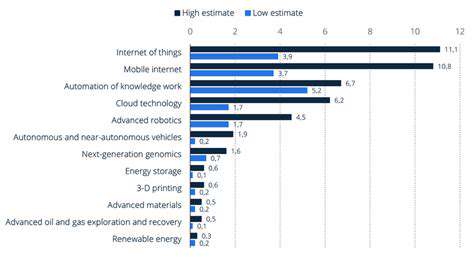
Potential Market Applications
The potential applications of this innovative technology are vast and span numerous industries. From optimizing agricultural yields by predicting crop health to revolutionizing healthcare with personalized diagnostics, the possibilities are truly limitless. This could lead to significant cost savings and increased efficiency across various sectors, impacting everything from food production to medical treatment.
Imagine a world where resource allocation is optimized based on real-time data. This technology could drastically reduce waste and improve resource management in industries like manufacturing and logistics. By anticipating supply chain disruptions and adjusting production accordingly, the potential for increased profitability and reduced environmental impact is substantial.
Economic Impact Assessment
The economic impact of this technology is projected to be profound, with substantial benefits for both consumers and businesses. Reduced costs and increased efficiency across various sectors will contribute to a more competitive global market. This could lead to job creation in new and emerging fields, fostering economic growth and prosperity.
Moreover, the potential for new revenue streams generated by the technology's applications is significant. This will create opportunities for startups and established companies alike, fostering innovation and driving economic development. The overall economic impact is poised to be positive and transformative.
Technological Advancements
The development of this technology relies on significant advancements in several key areas. These include breakthroughs in data acquisition, processing, and analysis. Sophisticated algorithms and machine learning models are crucial for interpreting complex data sets and generating reliable predictions.
Furthermore, the ability to integrate diverse data sources from various platforms is essential. This integration will allow for a holistic view of the environment and the factors influencing it, leading to more accurate and meaningful predictions. The continuous evolution of these advancements will be essential for maximizing the technology's potential.
Societal Implications
The societal implications of this technology extend beyond the economic realm. Improved resource management and reduced waste have the potential to mitigate environmental problems and promote sustainability. This technology could lead to a more equitable distribution of resources, creating opportunities for communities and individuals across the globe.
However, ethical considerations need to be addressed to ensure responsible and equitable deployment of this technology. These considerations will help to maximize the benefits while minimizing potential risks and ensuring that the technology benefits all members of society. Careful planning and consideration are essential to navigate the potential societal impacts.

